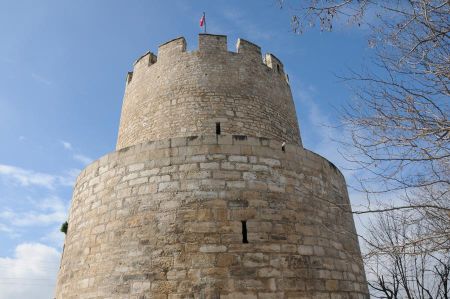Göksu - The journey along the river to Mut is worthwhile
- Written by Portal Editor
Göksu - The district town of Mut is located about 75 kilometres north of Silifke, inland, following the Göksu Nehri River.
Coming from Silifke, the river Göksu Nehri valley rises gently to about 400 meters in altitude until you reach the high plateau of Mut. The town was probably founded in connection with the settlement history of the priest-state of Olba in the first century BC.
 During the reign of the Roman Emperor Augustus, the region around present-day Mut was first documented as "Colonia Julia Felix Ninica," a Roman settlement. It was only under the Roman Emperor Claudius that Mut received city rights and its original name, "Claudiopolis."
During the reign of the Roman Emperor Augustus, the region around present-day Mut was first documented as "Colonia Julia Felix Ninica," a Roman settlement. It was only under the Roman Emperor Claudius that Mut received city rights and its original name, "Claudiopolis."
Only a few relics from Roman times remain, including the ancient theatre, which can still be seen as a field of ruins west of the town. Remains of the necropolis and some spolia can also still be seen.
According to legend, or rather tradition, there were supposedly various temples dedicated to Roman gods here, including a temple to Athena, a temple to Zeus, and even a temple to the Muses of Septimus Severus.
 During the 13th century, Mut was settled by Armenians until it was conquered by the Seljuks.
During the 13th century, Mut was settled by Armenians until it was conquered by the Seljuks.
They were followed from Karaman by the Karamanids, who are responsible for some buildings that still exist today, including the three-story round tower with a fortification wall on the hill in the centre of the city.
The local ruler Davut Paşa also had a caravanserai, also called a han, built, which served as a resting place for camel caravans from Karaman via the Servatul Pass or Silifke.
 Every year, a cultural music festival is held in Mut in honour of the Turkish folk singer Karacaoglan, who lived in Mut in the 17th century. Mut is known for its variant of the apricot – the Mut Şekerparesi. At the entrance to the town stands a statue of a girl carrying a basket of them.
Every year, a cultural music festival is held in Mut in honour of the Turkish folk singer Karacaoglan, who lived in Mut in the 17th century. Mut is known for its variant of the apricot – the Mut Şekerparesi. At the entrance to the town stands a statue of a girl carrying a basket of them.
The surrounding forests are home to wild boars, and the Gezende Dam on the Ermenek River is a welcome relief in this arid district. The dam houses a hydroelectric power plant built in Romania.
 Even today, Claudiopolis in Isauria is a titular see of the Roman Catholic Church, tracing its origins to a Christian diocese of late antiquity in the city of Claudiopolis (later called Ninica) in the Roman province of Cilicia, or Isauria in late antiquity.
Even today, Claudiopolis in Isauria is a titular see of the Roman Catholic Church, tracing its origins to a Christian diocese of late antiquity in the city of Claudiopolis (later called Ninica) in the Roman province of Cilicia, or Isauria in late antiquity.
With this year's paragliding competitions, the town on the Göksu Nehri River also aims to tap into the growing tourism boom on the coast.
 After speaking with the region's kaymakam, who personally agreed to give us a glimpse into the must-visit destinations in the Mut region, we can only say, "Go ahead!" The trip to Mut is worth it.
After speaking with the region's kaymakam, who personally agreed to give us a glimpse into the must-visit destinations in the Mut region, we can only say, "Go ahead!" The trip to Mut is worth it.
Please also read:
Amethyst Mine in the Dursunbey Mountains
Friedensreich Hundertwasser - Architect and Environmentalist
{gallery}goeksu-nehri-mut{/gallery}
